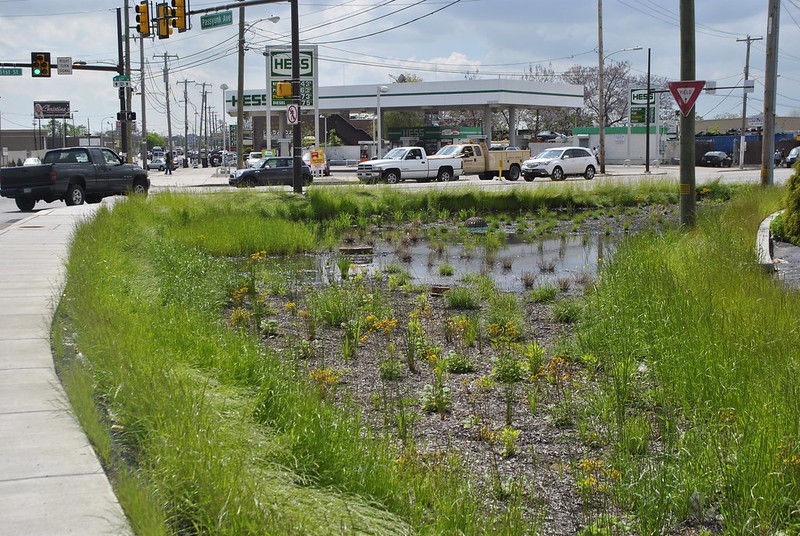
Rain gardens
Rain gardens are landscaped areas in depressions in the ground that capture rainwater so that it slowly infiltrates the soil. They are planted with native species that are resistant to both excess water and drought, helping to reduce runoff and protect nearby water bodies.
Rain gardens are landscaped areas specifically designed to capture and manage rainwater. They are constructed in shallow depressions in the ground and filled with native and adapted plants that can tolerate both excess water and periods of drought. The main idea is that rainwater slowly infiltrates the soil instead of quickly running off into nearby sewer systems or bodies of water.
Water production and storage
Main theme:
Central
Region:
2000 - 2500
Precipitation (mm):
Medium
Application difficulty:
3, 6, 11, 13 and 15
SDGs impacted:
Gravity
Energy used:
50 - 70
Efficiency (%):
Urban
Sector:
Reduces runoff, improves infiltration and water quality, creates habitats
Expected environmental impact:
$1.100 - $5.000
Estimated value:
1- https://biocorredores.org/biodiver-city-sanjose/catalogo-de-soluciones-basadas-en-naturaleza/jardin-de-lluvia 2- https://biocorredores.org/biodiver-city-sanjose/sites/default/files/2021-11/16-%20Jard%C3%ADn%20de%20Lluvia%20DIGITAL.pdf 3- https://www.creaf.cat/es/articulos/jardines-lluvia-propuestas-adaptar-inundaciones-ciudades
Links of interest: